In the competitive world of compact luxury SUVs, the BMW X3 and Mercedes GLB stand as formidable contenders, each bringing unique strengths to the table. Both vehicles combine style, comfort, and advanced technology, but they also cater to different preferences and priorities. Let’s delve deeper into their specifications, innovations, and deciding factors to help potential buyers make an informed choice.
BMW X3 vs Mercedes GLB – Differences & prices compared
Compare performance, boot capacity, efficiency and price at a glance.
Find out which car is the better choice for you – BMW X3 or Mercedes GLB?
Design and Comfort
The BMW X3 exudes a sporty and rugged presence with its muscular build, featuring a signature kidney grille and sleek LED headlights. The interior boasts high-quality materials, a driver-focused cockpit, and ample space for five passengers. With trunk capacities ranging from 450 to 570 liters, it combines practicality with luxury, making it an appealing option for families.
On the other hand, the Mercedes GLB offers a more sophisticated design with a slightly boxier silhouette. It mirrors the brand's characteristic elegance while providing an airy and spacious cabin. The GLB is also designed to accommodate up to seven passengers, a unique selling point that makes it versatile for larger families. Its trunk capacity is also slightly higher than the X3, providing flexible storage solutions.
Performance and Engine Options
Under the hood, the BMW X3 showcases a variety of engine options. From a 190 HP petrol MHEV to a powerful 510 HP petrol engine, the X3 caters to a wide range of power needs. The acceleration from 0-100 km/h varies from 3.8 seconds for the high-performance variant to around 8.4 seconds for more economical models. Moreover, with a range of drivetrain options, including all-wheel drive and multiple hybrids, the X3 demonstrates versatility in performance.
Conversely, the Mercedes GLB focuses on efficiency without sacrificing performance. Engine options range from a 116 HP diesel variant to a robust 320 HP petrol engine. With its peak acceleration times from 5.5 to 10.3 seconds, it also offers an admirable driving experience. The GLB features a dual-clutch automatic transmission for seamless gear shifts, differentiating it in driving dynamics compared to the BMW's automatic gearbox.
Innovative Technology and Features
Both models put a strong emphasis on technology. The BMW X3 is equipped with the latest iDrive system, offering a digital cockpit, navigation, and connectivity options backed by an intuitive interface. Its optional features include a premium audio system and advanced driver-assistance systems, catering to safety and convenience.
The Mercedes GLB boasts the MBUX infotainment system, which utilizes voice commands and advanced AI for an engaging user experience. It also offers features like augmented reality navigation, enhancing the driving experience with interactive overlays on the display. This focus on technology plays a significant role in the appeal of both vehicles.
Economy and Environment
When comparing fuel consumption, the BMW X3 presents a favorable range with figures as low as 2.1 L/100 km for hybrid models, showcasing its commitment to sustainability. However, its CO2 emissions vary, with some models reaching up to 246 g/km depending on the engine variant.
The Mercedes GLB, while not as low as the X3, holds its ground with a consumption range starting from 5.6 L/100 km for more efficient options. Its CO2 emissions also reflect a commitment to environmental standards, ranging up to 204 g/km.
Final Thoughts
Choosing between the BMW X3 and Mercedes GLB ultimately comes down to personal preference and specific needs. The X3 appeals to those seeking a sporty, performance-oriented SUV, while the GLB is tailored for families requiring versatility and comfort. Both brands offer innovative features and quality craftsmanship, ensuring that either vehicle will provide an exceptional driving experience.
Here’s where it gets real: The technical differences in detail
Costs and Efficiency:
When it comes to price and running costs, the biggest differences usually appear. This is often where you see which car fits your budget better in the long run.
Mercedes GLB has a noticeable advantage in terms of price – it starts at 40500 £, while the BMW X3 costs 51300 £. That’s a price difference of around 10748 £.
Fuel consumption also shows a difference: BMW X3 manages with 2.80 L and is therefore clearly more efficient than the Mercedes GLB with 5.60 L. The difference is about 2.80 L per 100 km.
Engine and Performance:
Power, torque and acceleration say a lot about how a car feels on the road. This is where you see which model delivers more driving dynamics.
When it comes to engine power, the BMW X3 has a a bit edge – offering 398 HP compared to 320 HP. That’s roughly 78 HP more horsepower.
In acceleration from 0 to 100 km/h, the BMW X3 is a bit quicker – completing the sprint in 4.60 s, while the Mercedes GLB takes 5.50 s. That’s about 0.90 s faster.
There’s no difference in top speed – both reach 250 km/h.
There’s also a difference in torque: BMW X3 pulls decisively stronger with 670 Nm compared to 400 Nm. That’s about 270 Nm difference.
Space and Everyday Use:
Whether family car or daily driver – which one offers more room, flexibility and comfort?
Both vehicles offer seating for 5 people.
In curb weight, Mercedes GLB is somewhat lighter – 1640 kg compared to 1930 kg. The difference is around 290 kg.
Boot capacity is identical – both offer 570 L of storage.
In maximum load capacity, the Mercedes GLB performs barely noticeable better – up to 1805 L, which is about 105 L more than the BMW X3.
When it comes to payload, BMW X3 somewhat takes the win – 570 kg compared to 500 kg. That’s a difference of about 70 kg.
Who comes out on top?
Overall, the BMW X3 shows itself to be dominates this comparison and secures the title of DriveDuel Champion.
It convinces with the more balanced overall package and proves to be the more versatile choice for everyday use.
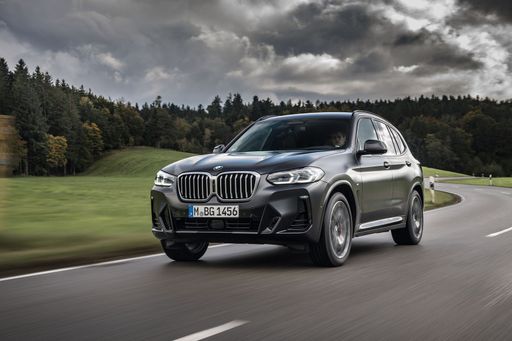 @ BMW Group Press
@ BMW Group Press
BMW X3
BMW X3
The BMW X3 mixes Bavarian poise with everyday practicality, delivering a composed ride and a cabin that feels both premium and lived-in. It’s the sort of SUV that lets you enjoy sporty handling without sacrificing family-friendly space, so you get fun and sense in one neat package.
details @ BMW Group Press
@ BMW Group Press
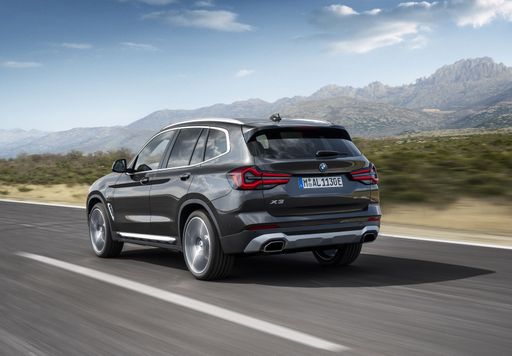 @ BMW Group Press
@ BMW Group Press
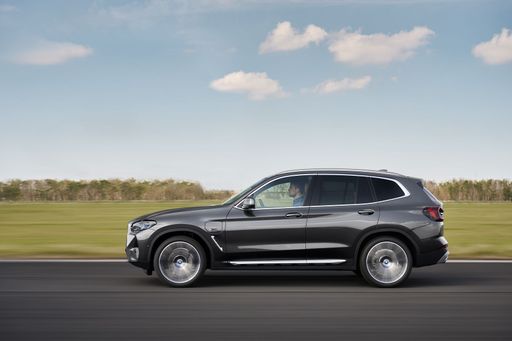 @ BMW Group Press
@ BMW Group Press
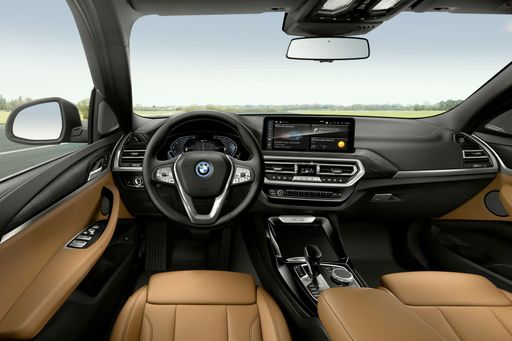 @ BMW Group Press
@ BMW Group Press
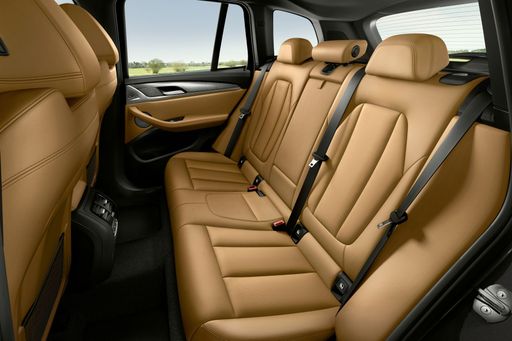 @ BMW Group Press
@ BMW Group Press
Mercedes GLB
The Mercedes GLB is a practical compact SUV that mixes boxy, family-friendly space with premium German polish, making it an appealing choice for buyers who want usefulness without pretension. It drives with a confident, composed feel and somehow manages to look both rugged and refined — the grown-up SUV that still likes to have fun.
details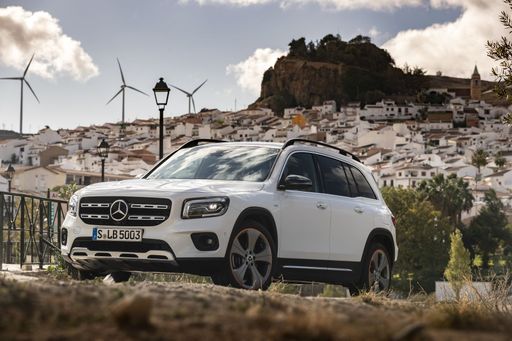 @ Mercedes-Benz Group Media
@ Mercedes-Benz Group Media
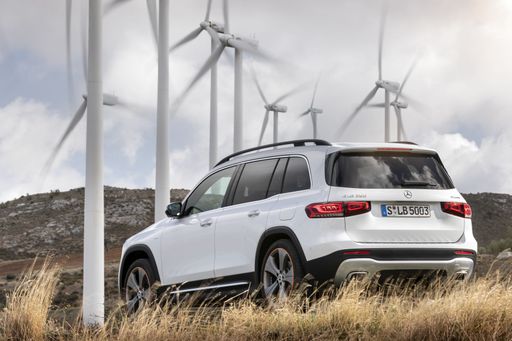 @ Mercedes-Benz Group Media
@ Mercedes-Benz Group Media
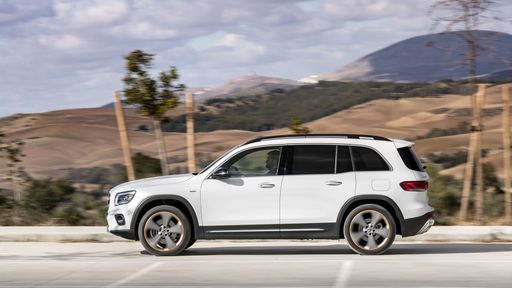 @ Mercedes-Benz Group Media
@ Mercedes-Benz Group Media
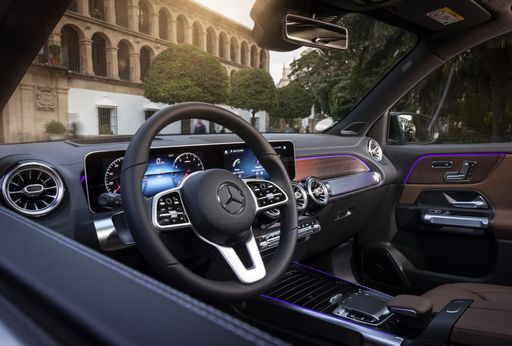 @ Mercedes-Benz Group Media
@ Mercedes-Benz Group Media
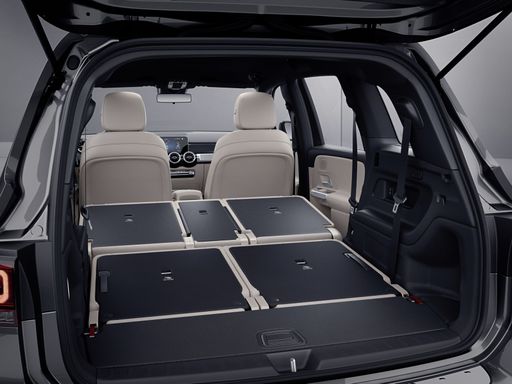 @ Mercedes-Benz Group Media
@ Mercedes-Benz Group Media
 @ BMW Group Press
@ BMW Group Press
|
 @ Mercedes-Benz Group Media
@ Mercedes-Benz Group Media
|
|
|
|
Costs and Consumption |
|
|---|---|
|
Price
51300 - 72400 £
|
Price
40500 - 65300 £
|
|
Consumption L/100km
2.8 - 7.7 L
|
Consumption L/100km
5.6 - 9 L
|
|
Consumption kWh/100km
-
|
Consumption kWh/100km
-
|
|
Electric Range
88 km
|
Electric Range
-
|
|
Battery Capacity
19.70 kWh
|
Battery Capacity
-
|
|
co2
64 - 175 g/km
|
co2
146 - 204 g/km
|
|
Fuel tank capacity
50 - 65 L
|
Fuel tank capacity
52 - 60 L
|
Dimensions and Body |
|
|---|---|
|
Body Type
SUV
|
Body Type
SUV
|
|
Seats
5
|
Seats
5
|
|
Doors
5
|
Doors
5
|
|
Curb weight
1930 - 2140 kg
|
Curb weight
1640 - 1820 kg
|
|
Trunk capacity
460 - 570 L
|
Trunk capacity
565 - 570 L
|
|
Length
4755 mm
|
Length
4634 - 4650 mm
|
|
Width
1920 mm
|
Width
1834 - 1850 mm
|
|
Height
1660 mm
|
Height
1665 - 1692 mm
|
|
Max trunk capacity
1600 - 1700 L
|
Max trunk capacity
1800 - 1805 L
|
|
Payload
570 kg
|
Payload
500 kg
|
Engine and Performance |
|
|---|---|
|
Engine Type
Petrol MHEV, Diesel MHEV, Plugin Hybrid
|
Engine Type
Petrol MHEV, Diesel
|
|
Transmission
Automatic
|
Transmission
Automatic
|
|
Transmission Detail
Automatic Gearbox
|
Transmission Detail
Dual-Clutch Automatic
|
|
Drive Type
All-Wheel Drive
|
Drive Type
Front-Wheel Drive, All-Wheel Drive
|
|
Power HP
197 - 398 HP
|
Power HP
116 - 320 HP
|
|
Acceleration 0-100km/h
4.6 - 7.8 s
|
Acceleration 0-100km/h
5.5 - 11.5 s
|
|
Max Speed
215 - 250 km/h
|
Max Speed
188 - 250 km/h
|
|
Torque
330 - 670 Nm
|
Torque
230 - 400 Nm
|
|
Number of Cylinders
4 - 6
|
Number of Cylinders
4
|
|
Power kW
145 - 293 kW
|
Power kW
85 - 235 kW
|
|
Engine capacity
1995 - 2998 cm3
|
Engine capacity
1332 - 1991 cm3
|
General |
|
|---|---|
|
Model Year
2024 - 2025
|
Model Year
2025
|
|
CO2 Efficiency Class
F, E, B
|
CO2 Efficiency Class
E, F, G
|
|
Brand
BMW
|
Brand
Mercedes-Benz
|
What drive types are available for the BMW X3?
The BMW X3 is offered with All-Wheel Drive.
The prices and data displayed are estimates based on German list prices and may vary by country. This information is not legally binding.
